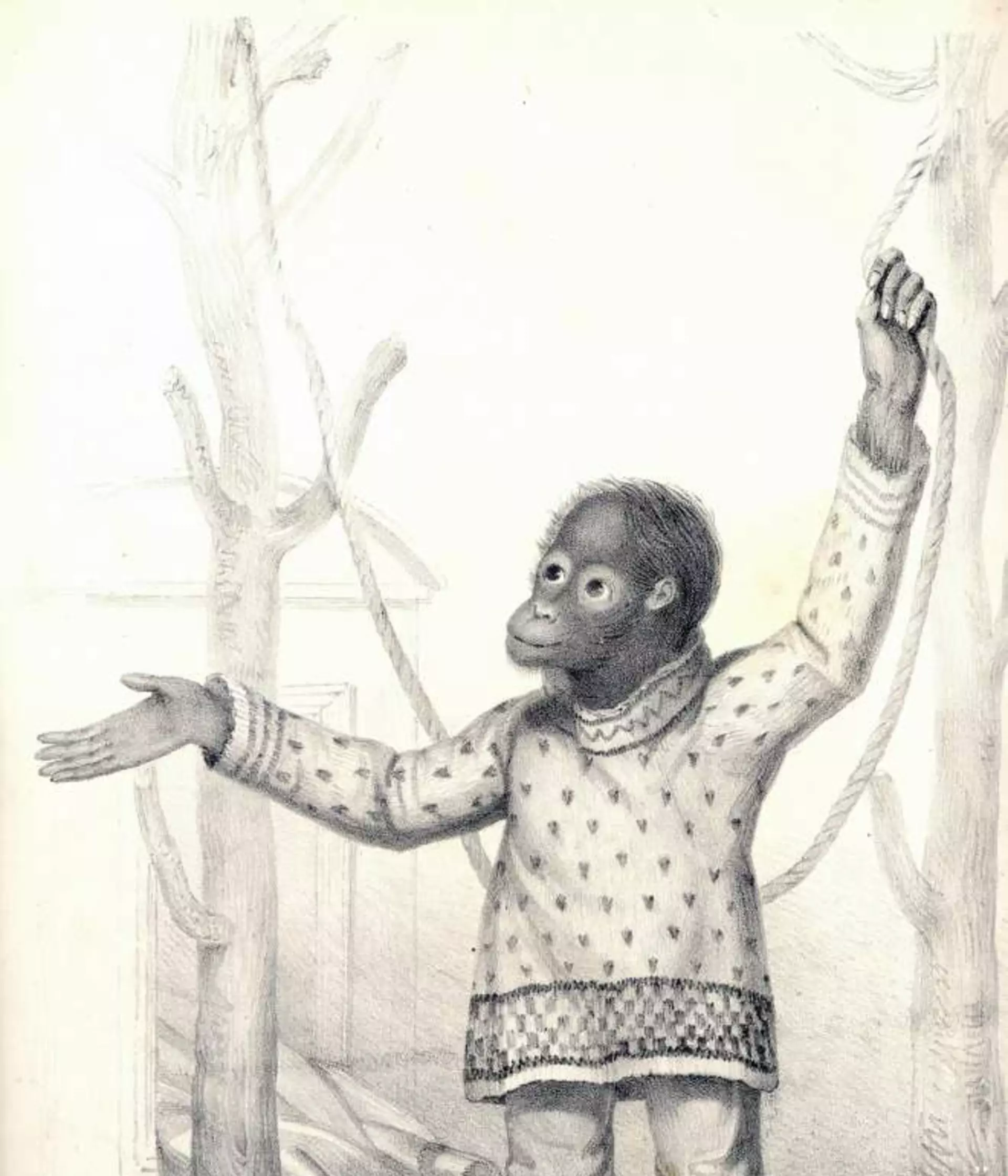Darwin and the orangutan
On 28 March 1838, Charles Darwin came to the Zoo to see Jenny. It was his first sight of an ape. He described Jenny in a letter:
“The keeper showed her an apple, but would not give it her, whereupon she threw herself on her back, kicked & cried, precisely like a naughty child. - She then looked very sulky & after two or three fits of pashion [sic], the keeper said, 'Jenny if you will stop bawling & be a good girl, I will give you the apple.' - She certainly understood every word of his, &, though like a child, she had great work to stop whining, she at last succeeded, & then got the apple, with which she jumped into an arm chair & began eating it, with the most contented countenance imaginable.”
Jenny made a profound impression on Darwin. Leading him to write in his notebook: “Let man visit Ouranoutang in domestication, hear expressive whine, see its intelligence when spoken [to]; as if it understands every word said - see its affection. - to those it knew. - see its passion & rage, sulkiness, & very actions of despair; ... and then let him boast of his proud preeminence ... Man in his arrogance thinks himself a great work, worthy the interposition of a deity. More humble and I believe true to consider him created from animals.”
Jenny the orangutan
Jenny made a profound impression on Darwin. Leading him to write in his notebook: “Let man visit Ouranoutang in domestication, hear expressive whine, see its intelligence when spoken [to]; as if it understands every word said - see its affection. - to those it knew. - see its passion & rage, sulkiness, & very actions of despair; ... and then let him boast of his proud preeminence ... Man in his arrogance thinks himself a great work, worthy the interposition of a deity. More humble and I believe true to consider him created from animals.”
Darwin visited Jenny two more times, noting that she was "astonished beyond measure" when she saw her reflection in a mirror.
Another distinguished visitor, Queen Victoria, did not see the first Jenny, but did see the next orangutan to arrive in 1839 after Jenny’s death. As part of a tradition, the new orangutan was given the same name by her keepers, and so was also called Jenny. (This has lead to a certain amount of confusion…)
Queen Victoria was fascinated but repulsed by her first view of an orangutan in on 27 May 1842, calling Jenny “frightful and painfully and disagreeably human.”
This second Jenny was also seen by the famous zoologist Richard Owen and his wife on their visits to the Zoo. Mrs Owen wrote: “We saw Jenny have her cup of tea again. It was spooned and sipped in the most ladylike way, and Hunt, the keeper, put a very smart cap on her head, which made it all the more laughable. Hunt told me that, a few days ago, the Queen and Prince Albert were highly amused with Jenny's tricks, but that he did not like to put the cap on Jenny, as he was afraid it might be thought vulgar!”
